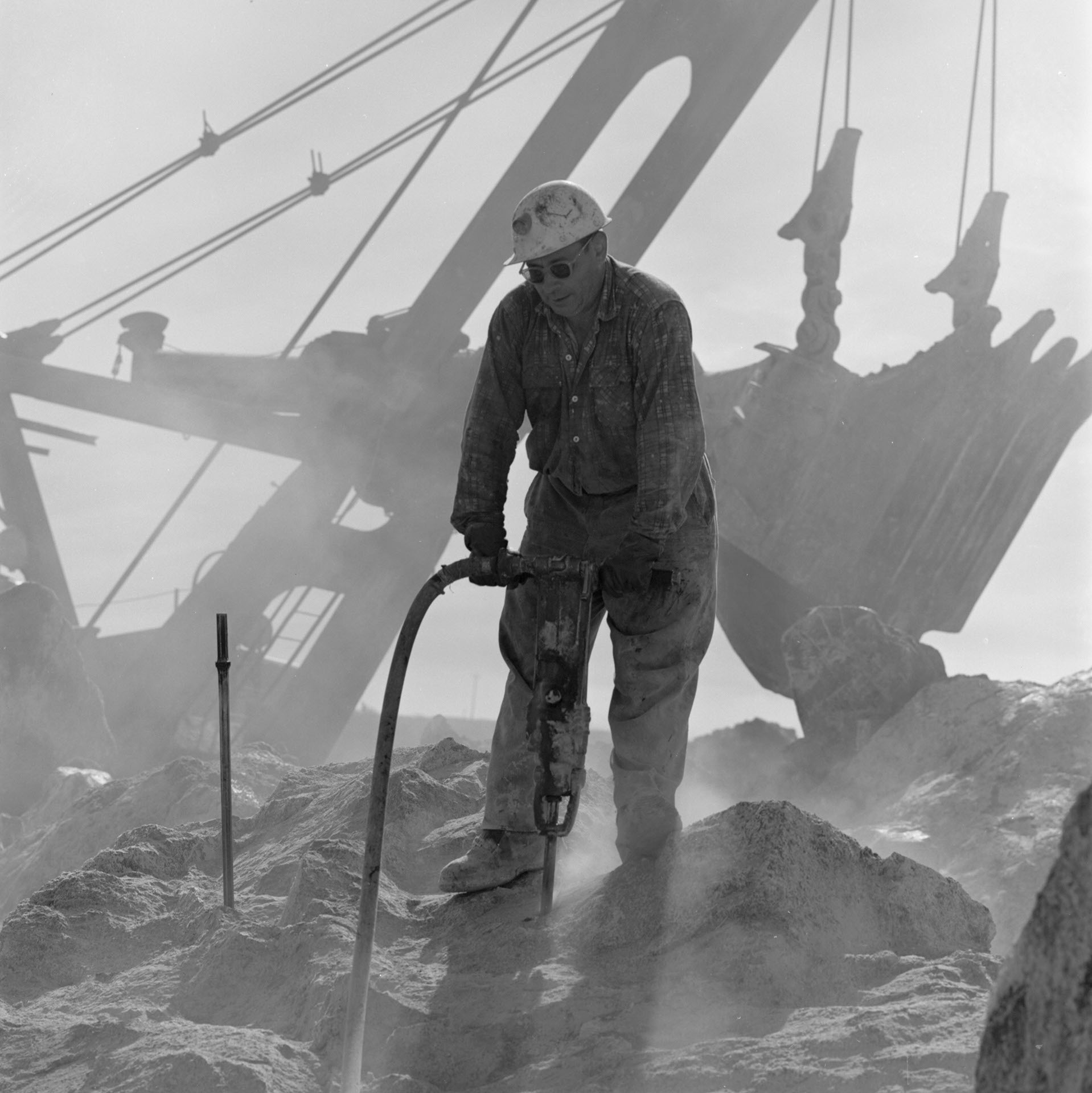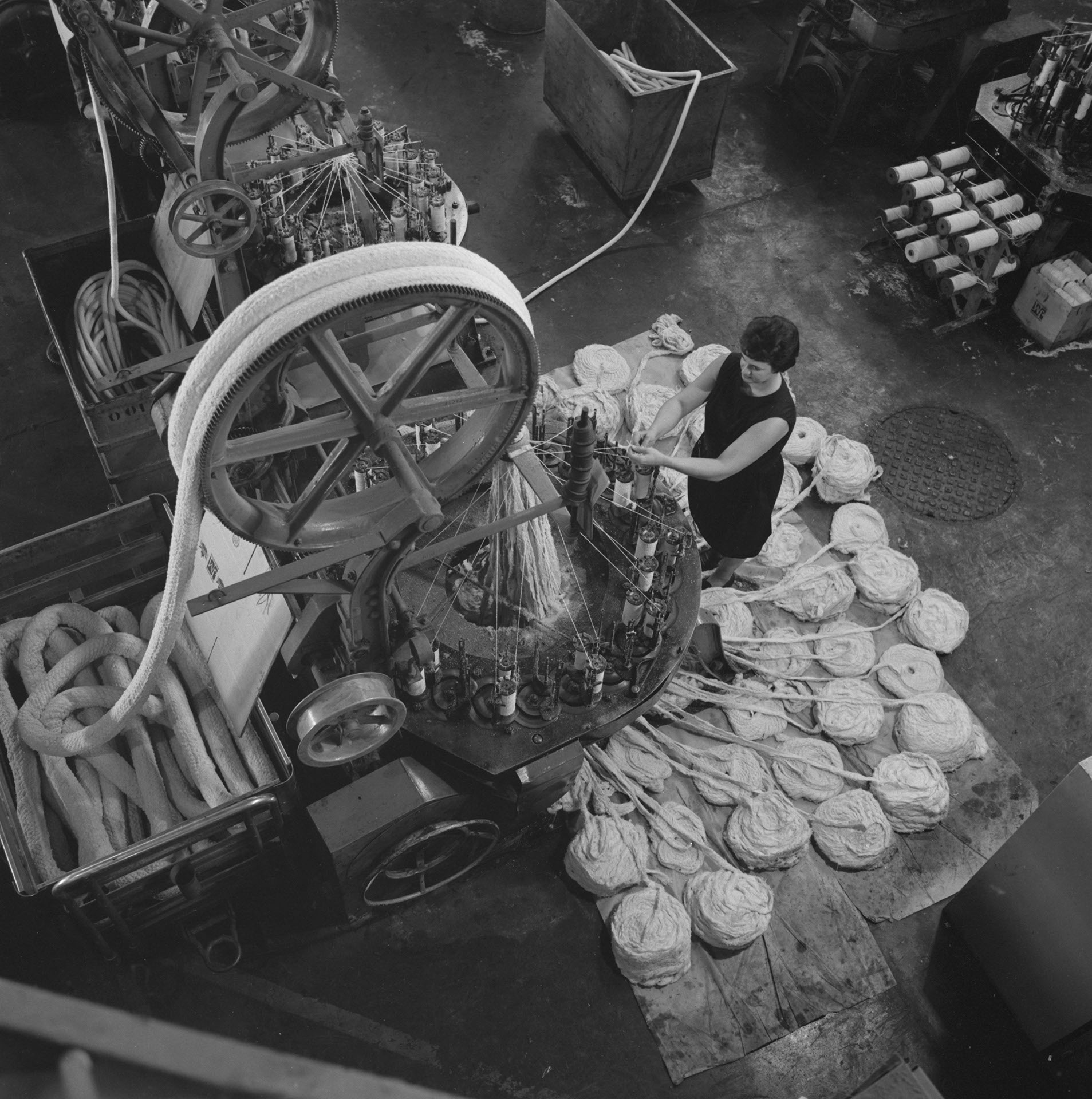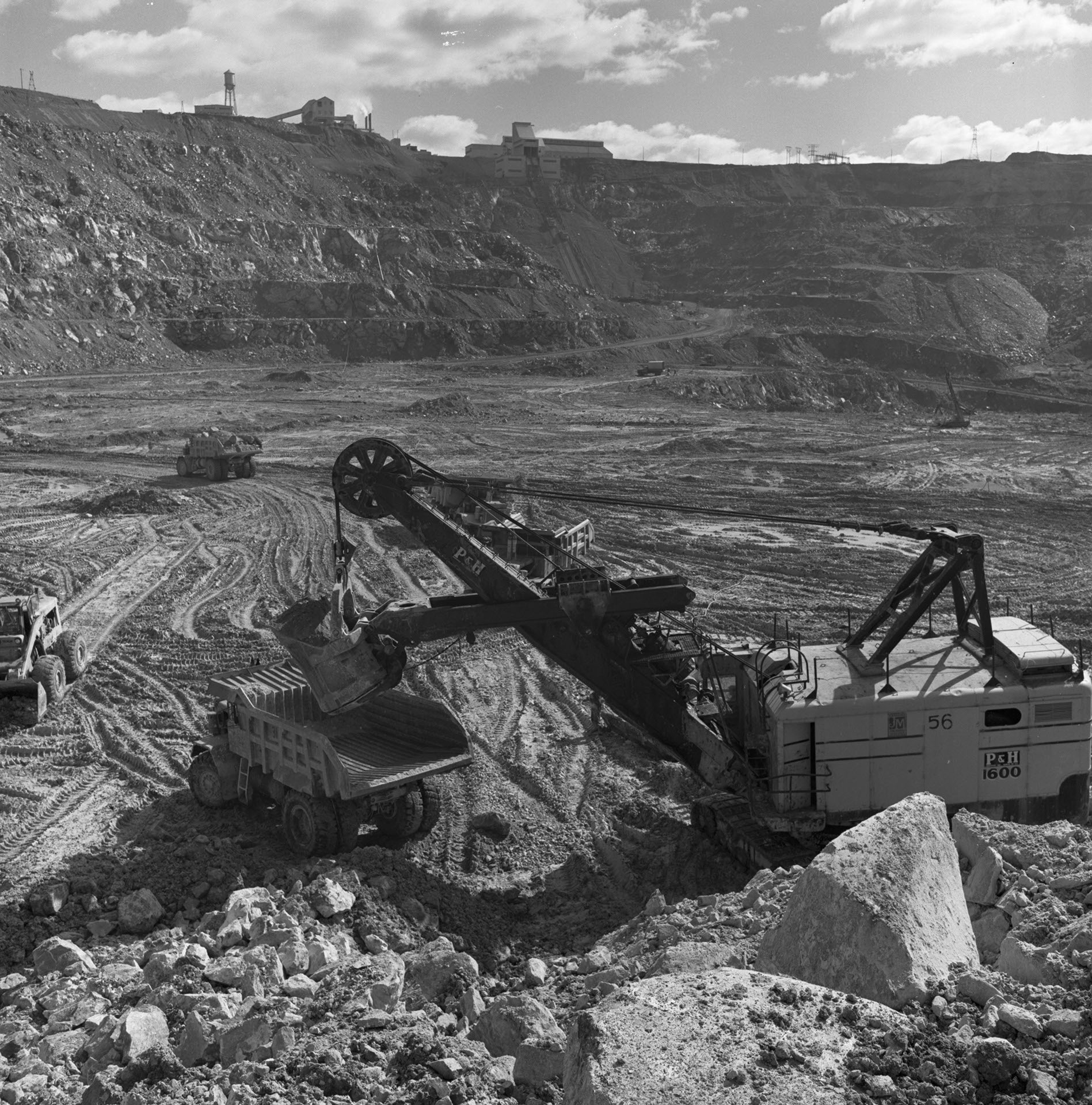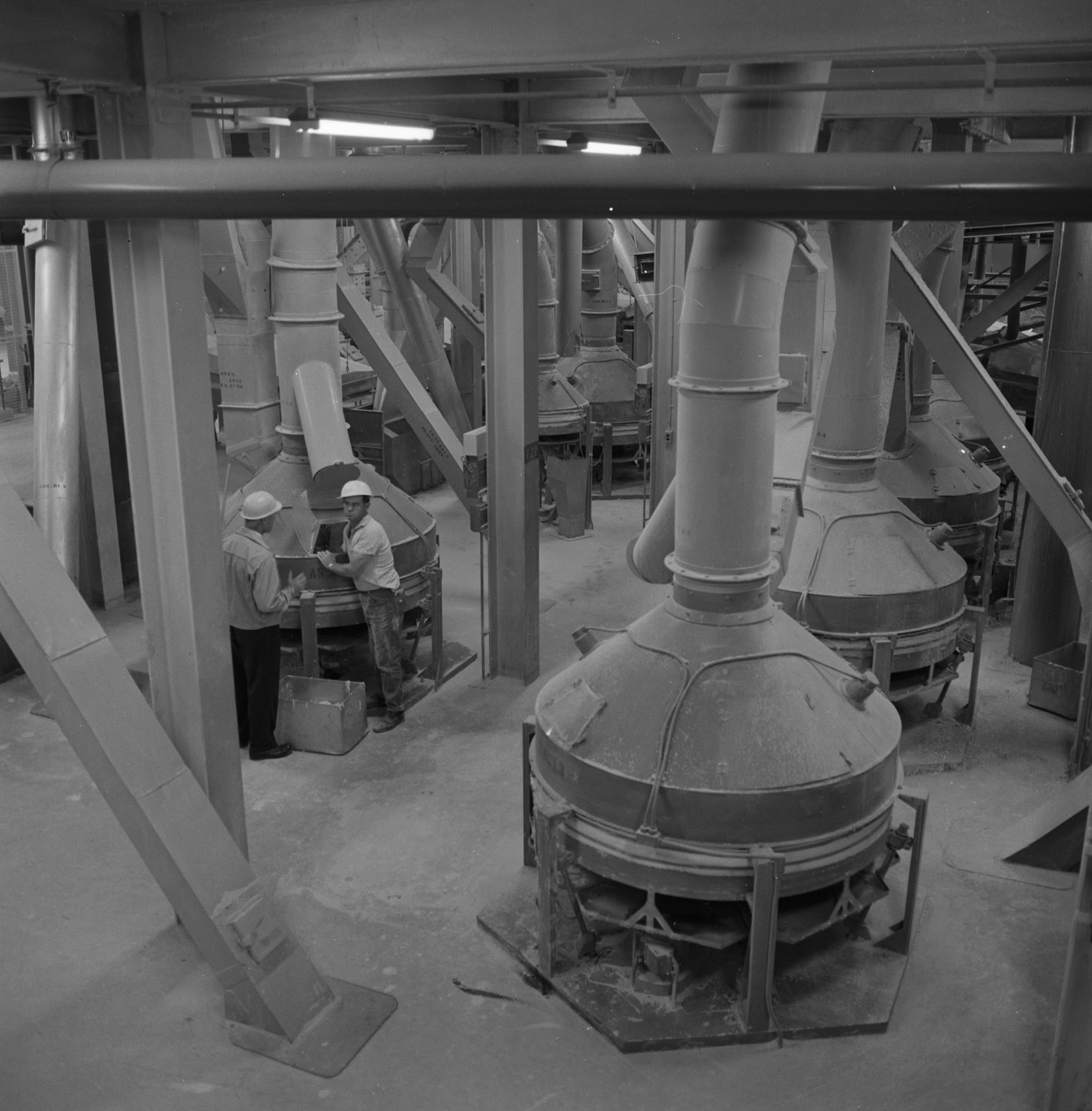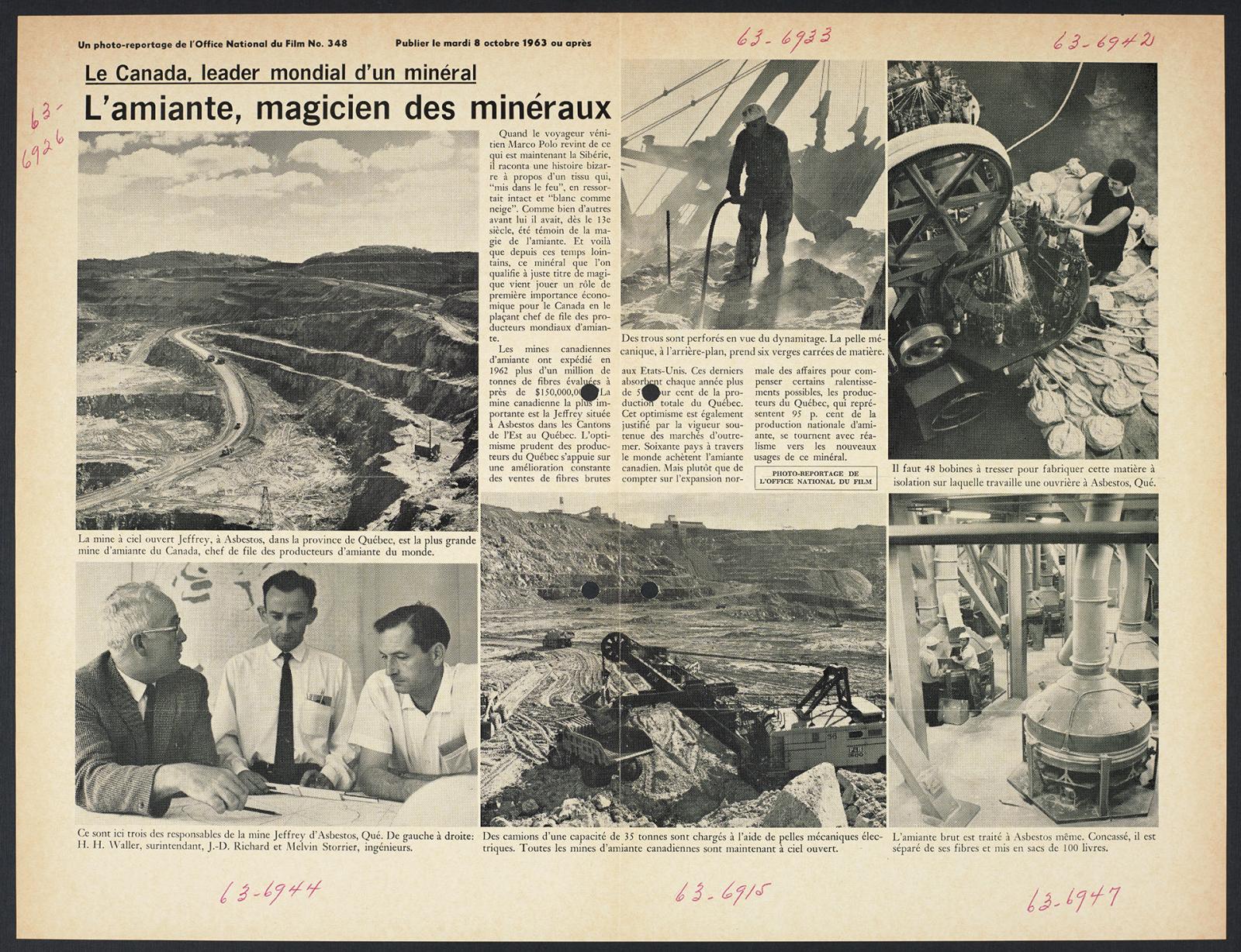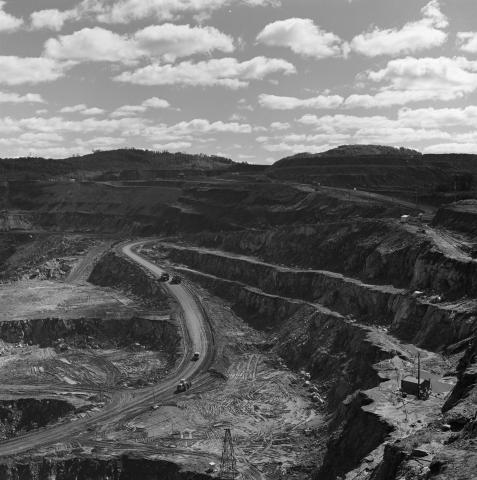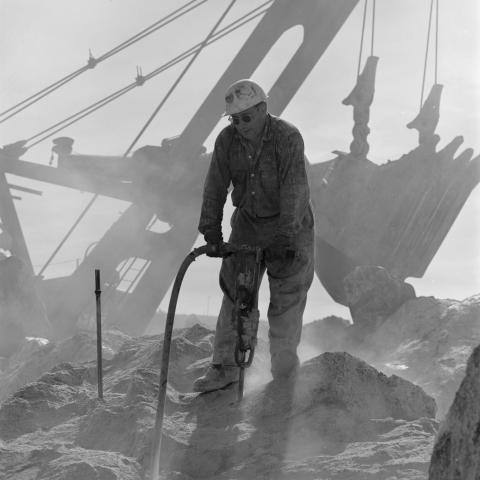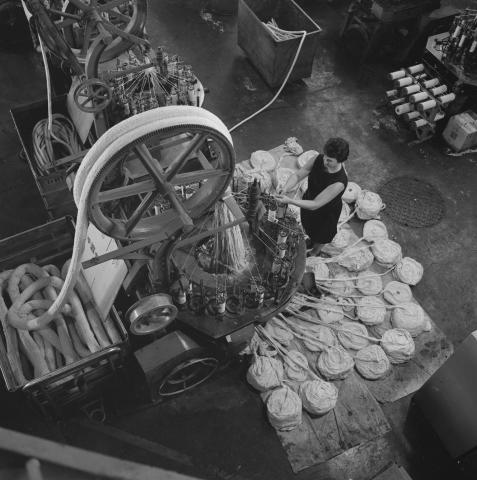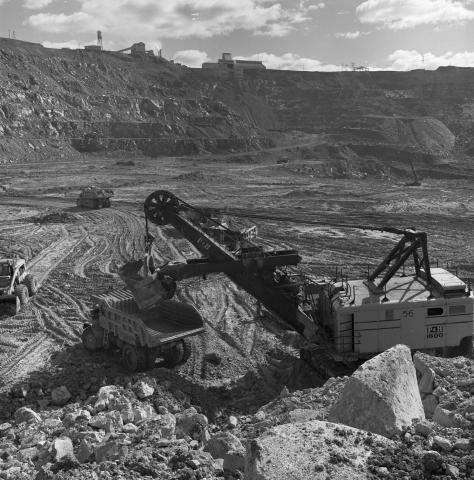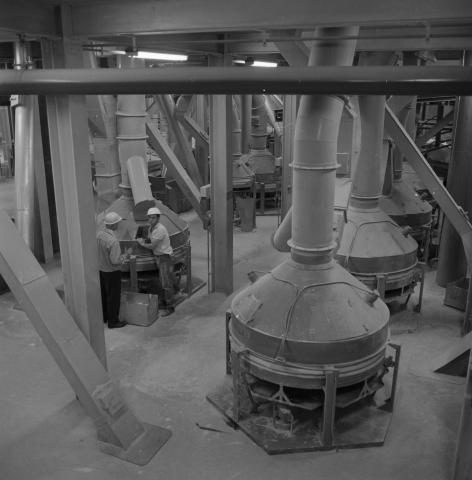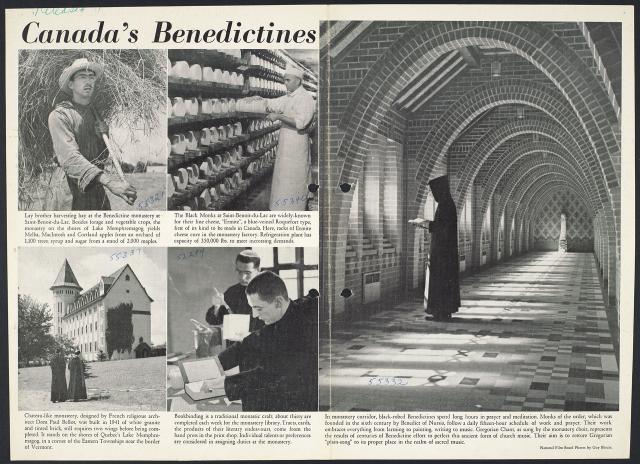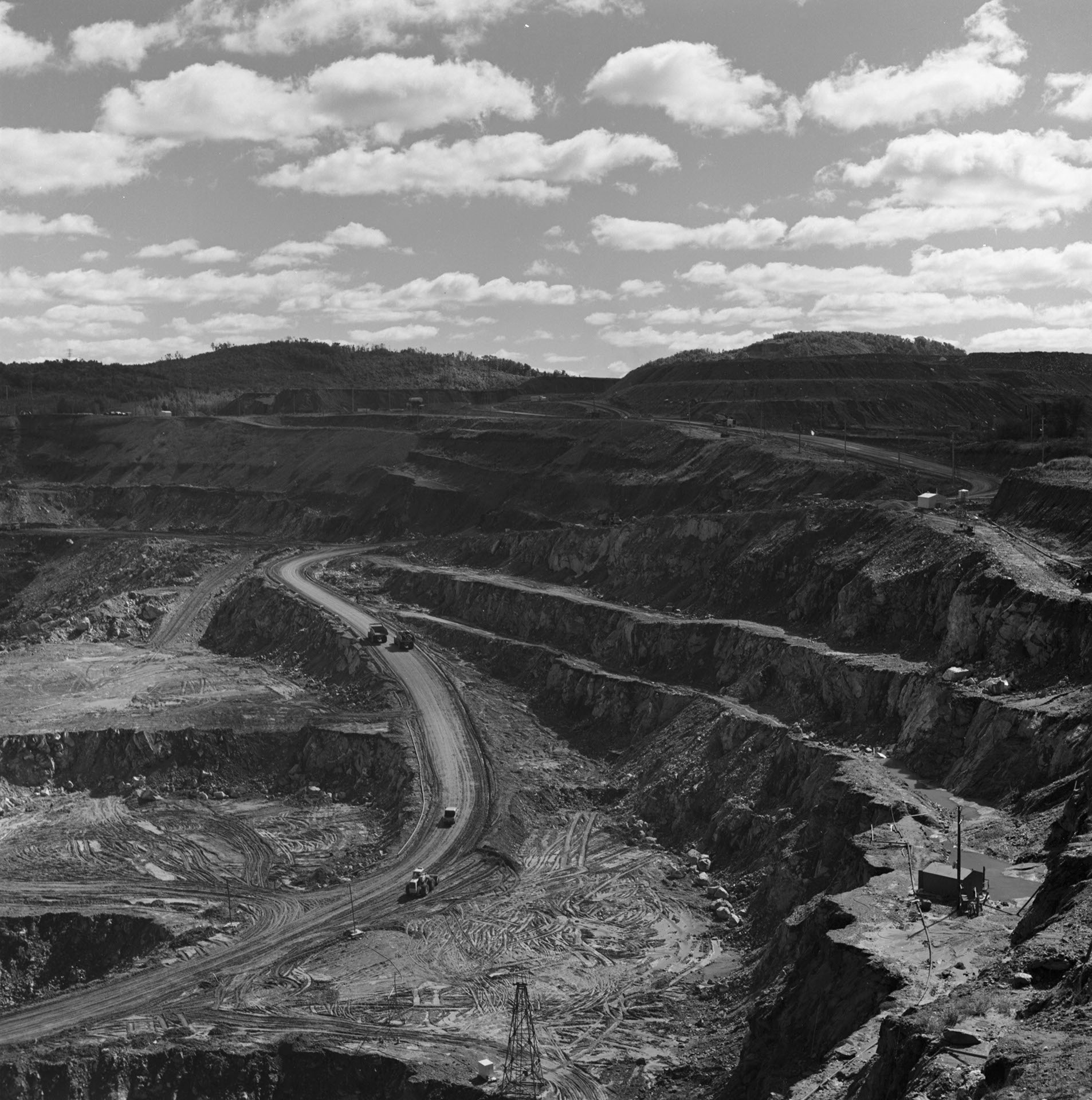
Photostory #348: Silken Harvest From Sub-Surface Rocks: Asbestos: Canada's Magic Mineral
Photographers
Maker
National Film Board of Canada
Release Date
October 8, 1963
Collection
CMCP fonds
Credit Line
Canadian Museum of Contemporary Photography fonds, National Gallery of Canada Library and Archives
Main Text
Since away back in 1875 when Canadian Confederation was just eight lusty years old, pierre- à-coton (stone of cotton, as asbestos was then called) has been part of Quebec's commercial life. Then, a single horse was used to hoist the asbestos-bearing chunks of rock to the higher surface of the open pit and young boys hand-picked the silky fibres from the ore. Today, in the Asbestos region of the eastern townships, massive, fourteen-story-high mills, fleets of 35-ton trucks, self-propelled drill rigs, electric shovels and ultra-modern mining techniques produce the bulk of Canada's annual one-and-a-quarter-million tons of milled asbestos fibre. Worth nearly $150,000,000 a year, all but a five-percent fraction of Canada's asbestos yield is exported to more than 60 different countries. Still the world's leading producer of this valuable mineral, Canada also has mines in Ontario and British Columbia, a newly-opened mine in Newfoundland and a proposed mine at Sugluk in the sub-arctic of Hudson Strait. From Canada's high-quality asbestos a flood of commercial products are made. Clothing, brake linings, blankets, clutch facings, gaskets, wall-board, insulation materials, pipes and tiles are but a few of the fire- and corrosion-proof products made of asbestos. Canada's magic mineral -- asbestos -- nearly 100 years old, plays an increasingly valuable part in the work-a-day life of a busy world.
Subjects:

